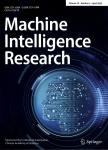版权所有:内蒙古大学图书馆 技术提供:维普资讯• 智图
内蒙古自治区呼和浩特市赛罕区大学西街235号 邮编: 010021

作者机构:Laboratory. for Biomedical Image Processing Institute for Pattern Recognition & Artificial Intelligence Huazhong University of Science & Technology Wuhan 430074 PRC School of Mechanical and Aeropace Engineering Nanyang Technological Vnlversity Sigapore 639798 Sigapore
出 版 物:《International Journal of Automation and computing》 (国际自动化与计算杂志(英文版))
年 卷 期:2008年第5卷第3期
页 面:276-283页
核心收录:
学科分类:0810[工学-信息与通信工程] 08[工学] 081001[工学-通信与信息系统]
基 金:This work was supported by National Natural Science Foundation of China (No.60372066)
主 题:Image compression object segmentation lossless image contour coding differential chain set partitioning in hierarchical trees (SPIHT) coding of arbitrarily shaped object.
摘 要:Small storage space for photographs in formal documents is increasingly necessary in today's needs for huge amounts of data communication and storage. Traditional compression algorithms do not sufficiently utilize the distinctness of formal photographs. That is, the object is an image of the human head, and the background is in unicolor. Therefore, the compression is of low efficiency and the image after compression is still space-consuming. This paper presents an image compression algorithm based on object segmentation for practical high-efficiency applications. To achieve high coding efficiency, shape-adaptive discrete wavelet transforms are used to transformation arbitrarily shaped objects. The areas of the human head and its background are compressed separately to reduce the coding redundancy of the background. Two methods, lossless image contour coding based on differential chain, and modified set partitioning in hierarchical trees (SPIHT) algorithm of arbitrary shape, are discussed in detail. The results of experiments show that when bit per pixel (bpp)is equal to 0.078, peak signal-to-noise ratio (PSNR) of reconstructed photograph will exceed the standard of SPIHT by nearly 4dB.